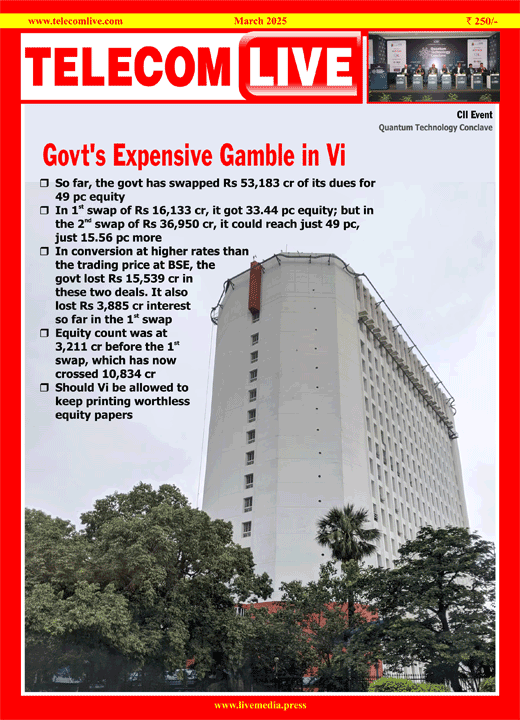India’s 5G penetration to top 11% just 14 months after launch of Jio, Airtel’s services: Ericsson
5G penetration is expected to top 11% in India at the end of 2023, 1.2 years after Reliance Jio and Bharti Airtel launched their commercial fifth-generation mobile services, according to the November edition of Ericsson’s Mobility Report released Thursday.
“5G subscription growth has also been strong in India throughout 2023. At the end of 2023 – fourteen months after its commercial launch – 5G penetration is expected to have topped 11 percent in India,” the Swedish telecom gear maker said.
Jio and Airtel are expected to complete the deployments of their 5G networks within the next few months. Third-ranked Vodafone Idea is yet to launch its commercial 5G services.
Regionally, the uptake of 5G subscriptions in North America continues to be strong. By the end of 2023, the region is expected to have the highest 5G subscription penetration globally at 61%, Ericsson said.
Ericsson estimates one out of five of all global mobile subscriptions to be 5G subscriptions by the end of 2023, as the growth “proves resilient despite continued economic challenges and geopolitical unrest in some markets”.
In fact, Ericsson’s latest prediction of 610 million new 5G subscriptions for the calendar year 2023 is a 63% increase over 2022 – bringing the global total to 1.6 billion – about 100 million more than previously predicted.
Global 5G subscriptions are expected to grow 330% between 2023 and 2029, from 1.6 billion to 5.3 billion, according to the report.
The vendor has forecasted 5G coverage to be available to more than 45% of the global population by the end of 2023 and 85% by the end of 2029. North America and the Gulf Cooperation Council are expected to have the highest regional 5G penetration rates by the end of 2029 at 92%. Western Europe is forecast to follow at 85% penetration.
With the latest Mobility Report, Ericsson has increased the upper timeline for forecasts, from 2028 to 2029.
As per the report, enhanced mobile broadband (eMBB), fixed wireless access (FWA), gaming and AR/VR/-based services are the most common early consumer use cases for 5G.
“With more than 600 million 5G subscriptions added globally this year, and rising in every region, it is evident that the demand for high-performance connectivity is strong. The roll-out out of 5G continues and we see an increasing number of 5G standalone networks being deployed, bringing opportunities to support new and more demanding applications for both consumers and enterprises,” said Fredrik Jejdling, Executive Vice President and Head of Networks, Ericsson/
The total mobile data traffic is estimated to grow threefold between the end of 2023 and the end of 2029, attributed to factors such as improved device capabilities, an increase in data-intensive content, and continued improvements in the performance of deployed networks.
“The rate of data growth in mobile networks clearly reflects consumers’ passion for enhanced mobile broadband-related applications. This trend will increase in pace as more consumers worldwide embrace 5G and new use cases emerge, triggering further growth in data traffic,” said Peter Jonsson, Executive Editor, Ericsson Mobility Report, Ericsson.
Jonson noted that with most traffic generated indoors, there is a growing need to extend 5G mid-band coverage both indoors and outdoors to ensure a “comprehensive 5G experience in all locations”.



